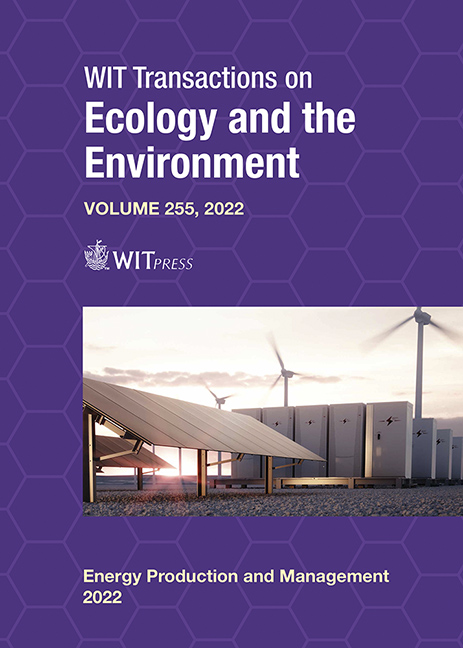WATER–ENERGY–FOOD NEXUS TOOL SELECTION AND APPLICATION OF TOOLS TO A REGIONAL CASE STUDY
Price
Free (open access)
Transaction
Volume
255
Pages
11
Page Range
93 - 103
Published
2022
Paper DOI
10.2495/EPM220081
Copyright
Author(s)
FATIMA MANSOUR, MAJDI ABOU NAJM, ALI YASSINE, ELENA NAJJAR, MAHMOUD AL-HINDI
Abstract
Energy, as an integral resource to everyday life, cannot be separated from the other resources involved in its extraction, production, and consumption. The water–energy–food nexus (WEFN) conceptualizes resource sustainability because it frames the interlinkages across sectors, accounting for resource flow across systems. Thus, future sustainable energy resource planning goes hand in hand with overall resource and environmental sustainability. This entails that systems be considered holistically, especially in the planning and production stages, and this can be achieved by applying tools that address the integrated WEFN. While the literature supports a growing number of these tools, the breadth of WEFN applications renders it difficult to determine which tools are suitable for different objectives and users. This work provides a systematic selection approach that applies multi-criteria decision making to determine which tool best fits a set of circumstances. The selection criteria are developed to reflect tool features as comprehensively as possible, accounting for: economic, social, and environmental factors, temporal/spatial scales, stakeholder inclusion, parameter comprehensiveness, and tool complexity, flexibility, and accessibility. Three unique user (scientific user, policymaker, and nontechnical stakeholder) scenarios are simulated via distinctive weighting schemes. Of an initial pool of 40 tools, four tools are selected across varied user scenarios. The selected tools are applied to a case study to better demonstrate how the tools differ in performance, as is appropriate for respective user objectives. Case study applications indicate that results are sensitive to assumptions and input data, and that the nature of results across tools differ significantly. The work is versatile in that selection criteria and weighting schemes can be more specifically tailored to cater to specific user needs. Once the WEFN approach is integrated into energy management, the overall perspective on sustainability will improve as advancement in one aspect does not come at the expense of another.
Keywords
water–energy–food nexus, multi-criteria decision making, analytical hierarchy process, resource management, tools, selection, sustainability





